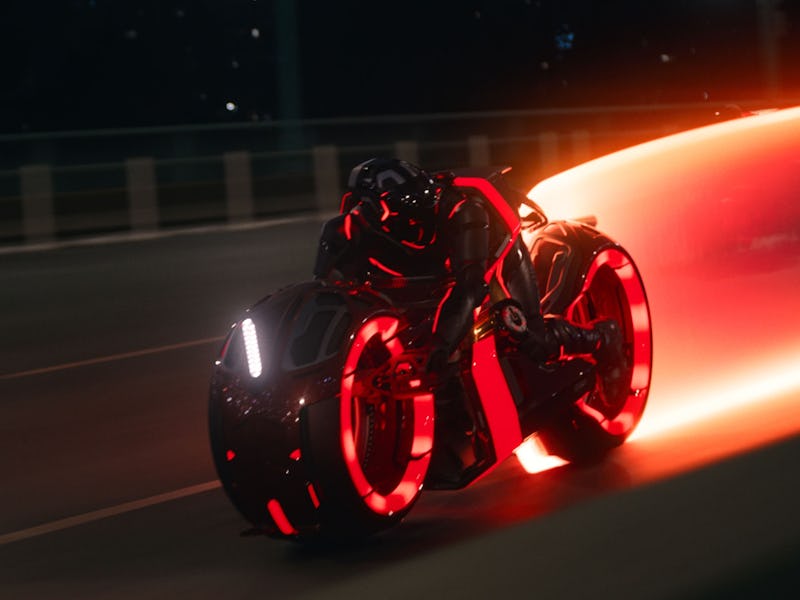Why Tron: Ares Sounds Super Loud, But Doesn’t Destroy Your Ears
Tormod Ringnes reveals what makes Tron sound like Tron.

While the reviews for Tron: Ares are mixed, there’s one element of the new sci-fi epic that nobody can truly disagree with: the sound is amazing. Much of the attention to the soundscape of Tron: Ares has been focused on the pulse-pounding score from Nine Inch Nails, which, in terms of the theater experience, rivals the 2010 Daft Punk score for Tron: Legacy. But the sound of Tron is more than just the music. In fact, if there’s one thing that makes Ares so special, it's that every element of the soundscape has been meticulously planned and fully integrated with the score. But, as Tron: Ares sound designer Tormod Ringnes tells Inverse, good sound on a big sci-fi epic doesn’t just mean loud.
“It’s not just that the sound is very loud. It’s actually difficult to make a loud, physical sound without hurting your ears,” Ringnes explains. “We do a lot of work to take away the painful sounds and painful frequencies that hurt your ears. Part of that is to make sure there’s a lot of different dynamic sounds, and to make it immersive. We use the subwoofer, but not too much.”
Eve Kim (Greta Lee) runs from one of the famous “Recognizers” in Tron: Ares.
Ringnes emphasizes that the film was mixed for both IMAX and Dolby Atmos, but hints that the Atmos experience may represent the soundscape a bit better. “In IMAX, you have to push the air in a different way because the room is bigger,” he says. “But with Dolby Atmos, the mix is a little more balanced. Either way, it’s a film you have to see in the cinema.”
Fans of the 1982 and 2010 films will recognize a lot of familiar sounds from the various “Grids,” the digital worlds of Tron. And you might think that plucking those sounds from one computer to another is all Ringnes and his team had to do. But, although Tron: Ares used the full library of sounds from the previous films, he reveals that many of the new sounds for the film were created organically.
“Of course, there are a few sounds made by computer, but for us, even if it's a digital world, there needs to be something organic behind it,” Ringnes explains. “To make those, I like to use really old synthesizers, because they have a really organic sound. It’s always a mixture, but we use lots of instruments.”
For the incredible vehicles in Tron: Ares, namely the LightCycles, and the new, larger vehicle called the DART, Ringnes says using those instruments was crucial. “We used cellos to make the sound for the big DART,” Ringnes says. “And for the LightCycles, we had to record real engines, we record the wind, passing, and all of these kinds of things.”
Overall, Ringnes says that the instruction from director Joachim Rønning was to make the sound of Tron: Ares “dark and bold.” To that end, the score from Nine Inch Nails had to be fully integrated into the actual soundscape of the movie. Ringnes says, “It was a great collaboration.”
Trent Reznor of Nine Inch Nails performing music from Tron: Ares.
He also singles out one particular scene in the movie in which the visuals, the music, and the sound design are all working together in perfect, badass harmony. Eve Kim (Greta Lee) is on the Light Skimmer, trying to get to the portal that will take her back to the real world. And as she passes through the threshold, all the sound effects merge with the vocals from the Nine Inch Nails track “I Know You Can Feel It.”
“For me, with the Light Skimmer scene, I thought, it’s OK to be bold, but you need to be in good harmony,” Ringnes says. “With that scene, we need to have the pace, we need to have the rhythm, we need to have the danger of the drones.”
This scene, in many ways, represents the microcosm of what makes the sound of Ares so fantastic. No one element is overpowering, even if all of it seems larger than life. As Ringness puts it, “It all needed to work together. There should be one feeling.”